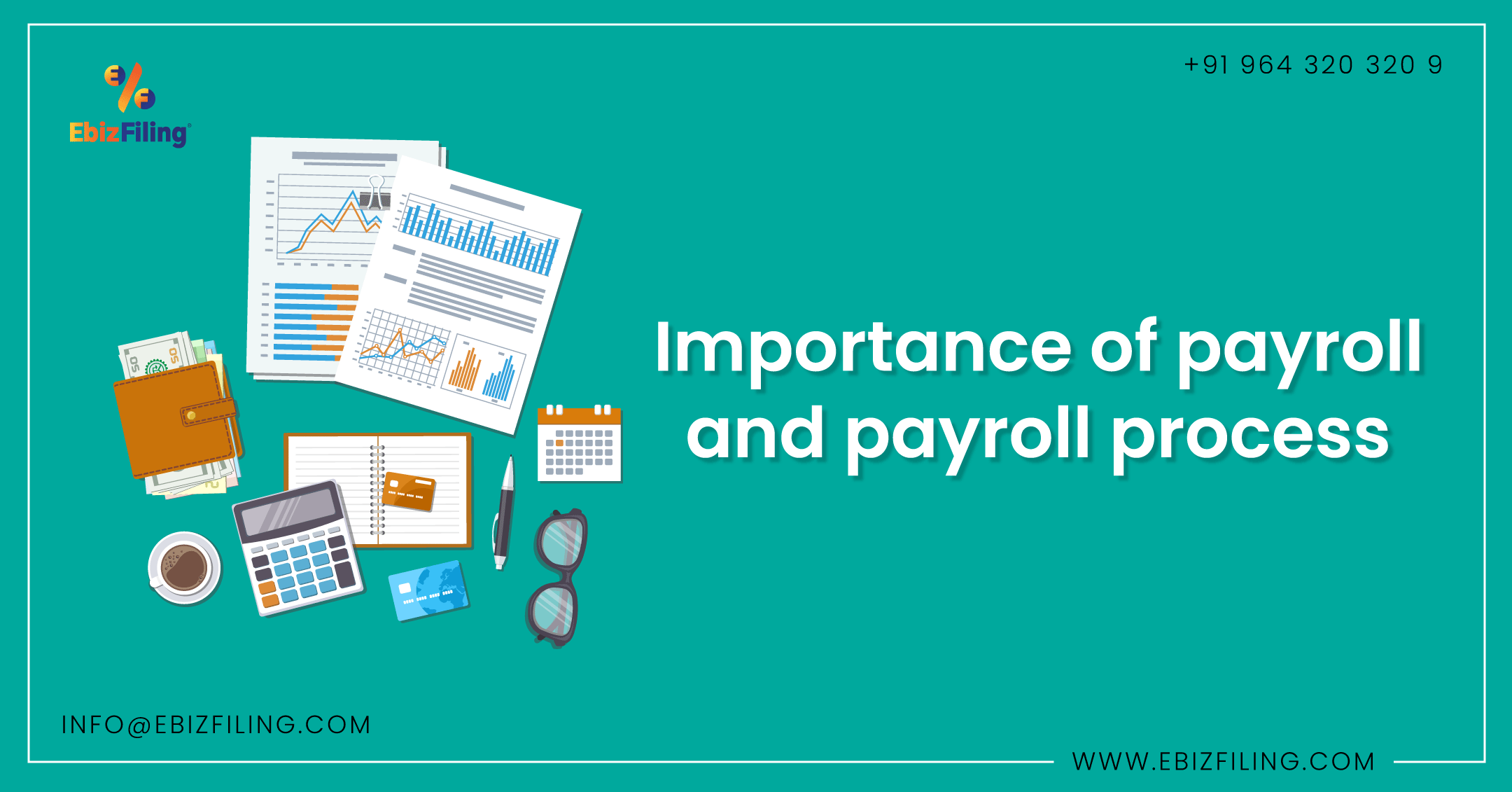
-
April 12, 2022
All about What is Payroll, Payroll Management in HR, Payroll Setup and Processing
Introduction
In this blog, there is detailed information on what is payroll, Payroll management in HR, the importance of Payroll, payroll setup and processing, and other payroll information. Payroll processing is one of the most important but also one of the most difficult company operations. Every business strives to operate as effectively as possible. A business organization must have a thorough understanding of payroll in order to provide maximum satisfaction to employees and resolve their concerns.
What is payroll?
Payroll is the process of paying a company employee’s salary. It starts with the development of a list of paid employees and ends with the recording of those expenses.
It is a complicated procedure that necessitates collaboration across several departments such as payroll, Human Resources, and finance. Businesses, on the other hand, may easily manage all of the complications by utilizing current technology.
The time between two salary disbursements is defined as a payroll cycle. Salaries might be paid weekly, quarterly, or monthly, depending on the needs of the business. In India, it’s typically processed once a month.
Payroll management in HR (Human Resource)
A payroll management system is a system that allows an employer to keep track of their employees salaries. Salary, allowances, deductions, and net payable to employees are all included in the salary structure. It also handles the creation of pay stubs. Manually conducted complicated computations can be automated with payroll software.
Every employee’s performance information is recorded through performance management. As a result, it assists companies in gaining a clear picture of their employees’ performance and skills, allowing management to schedule training according to each employee’s needs and requirements. When it comes to planning and general productivity enhancement, this type of employee performance assessment can be precious.
The HR Payroll System assists firms in reducing the number of people who manually maintain attendance, salary, working hours, and income taxes, among other things. Frequent repetition of payroll activities might lead to boredom, which can lead to an error. As a result, it is always a good idea to improve the process so that reliable data is available. HR payroll Management Systems assist businesses in reducing payroll errors.
Why Payroll Setup and Processing is Important
- The majority of the time, data security rules are stringent. Employee information is kept as private as possible, which is reflected in several degrees of administrative and access privileges. It also gives employees access to information about their salary impairments.
- This also gives a comprehensive picture of the company’s salary, which is crucial for a financial evaluation. In the event of pay hikes, a simple computation may provide the corporation with the full financial impact of such information.
- Many modern payroll systems are as cost-effective as remote cloud alternatives in most circumstances. To keep the database up to date, the company merely requires active registration. Employee salary management systems use a small number of expensive resources, which saves a significant amount of money.
Information on the Payroll Setup and Processing
When preparing, a payroll officer must be cautious. Pre-payroll, actual payroll, and post-payroll activities are the three steps that make up this process.
Step 1: Pre-Payroll Setup processing
- The net payable amount is influenced by several things. At this point, the various attendance, benefits, leave, and other policies become operational. To ensure regular payroll processing, management must specify these policies as a top priority.
- Linking with multiple departments is part of the payroll process. As a result, you will not miss any important information, such as attendance data, data from mid-year revisions, and others. Organizations use payroll software with advanced capabilities such as an employee self-service portal and a separate leave management system, among other things.
- After all of the data has been received, it must be validated for correctness and then converted to the proper format. It is also verified that the data is for all active employees and that no data for inactive employees are available while validating the data.
Step 2: Process for Payroll Calculation
After the data has been verified, it is entered into the payroll system of the company and processed. As a result of this procedure, the net due amount is calculated after removing the tax and deductions.
Step 3: After the process for Payroll
- During the payroll processing, all deductions, such as EPF, Tax Deducted at Source (TDS), and other related deductions are subtracted. After then, the total amount of the deduction is forwarded to government agencies, where it is either returned or reported as part of the PF return filing process.
- Each company keeps track of all financial transactions. Similarly, the salary transaction is documented as a transaction in the account books. The payroll management system ensures that all salary data is entered correctly into the accounting system.
- A report is kept after each payroll cycle that comprises all of the data from that payroll cycle. A payroll officer’s job is to keep this reporting system up to date for each department and to deliver it to anyone who requests it.
FAQs on Payroll
1. What’s the difference between a salary and a payroll?
Salary is the regular payment of a defined amount of money or remuneration to an employee for their labor. It can be done on a daily, weekly, monthly, or annual basis. Payroll, on the other hand, is a system that saves employee information and allows businesses to process their employee’s salary. Employees’ salaries are paid through payroll, which is a crucial workplace activity.
2. What is full-cycle payroll, and how does it work?
A full cycle payroll occurs when an organization completes all stages of the payroll cycle, including pre-payroll, actual payroll, and post-payroll.
3. Is payroll a finance or HR function?
It is an HR function because it deals with the processing of employee salaries. However, it will require involvement from other departments such as finance, administration, canteen/meal provider, transportation, and others.
4. What is the most crucial aspect of payroll?
The following are the top two most significant parts of payroll:
Accuracy – A single blunder can result in everything from a disgruntled employee to massive losses for the corporation, frequently in the millions of rupees.
Compliance – Any payroll system should adhere to rules and regulations such as Income Tax, EPF, and others. Noncompliance can result in fines for the company as well as a slew of other issues.
Payroll Setup & Processing
Take your payroll on cloud. Outsource your payroll to ebizfiling
About Ebizfiling -











Reviews
Bhadresh Panchal
08 Aug 2017Best service provider for Accounting services.
Dhanraj Bhuptani
16 May 2018They have a really good team of hardworking employees. I was guided and served very well.
Manank Turakhia
14 Jun 2019Ebizfilling.com is one of its kind of organization, believe me guys their working process is very smooth. I had an awesome experience regarding MSME certification. Thank you Kushani & Mansi for your wonderful efforts. Kudos to Ebizfiling, you are doing great keep doing it.
September 23, 2025 By Dhruvi
Changing Directors Post Registration Introduction Changing directors after a company’s registration means officially removing an old director or adding a new one to the company’s management team. Directors may be appointed either at incorporation or later by shareholders or the […]
February 27, 2025 By Team Ebizfiling
Legal Implications of Articles of Association (AOA) under company Law In Company Law, the AOA (Articles of Association) outlines a company’s internal rules, regulations, and governance structure. It defines how the company manages its operations, specifying the rights and responsibilities […]
February 12, 2025 By Team Ebizfiling
Difference Between Executive and Non-Executive Director Introduction Directors are pivotal to the success and governance of any organization. Among them, the roles of executive and non-executive directors stand out as distinct, both in responsibilities and contributions. Understanding the difference between […]